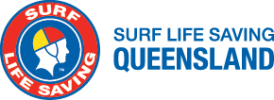The purpose of this guideline is to provide guidance for patrol members whilst setting up the beach area and also monitoring conditions throughout their patrol.
The principles outlined below should be used as guidelines when opening the beach, placing the flags and also completing beach report boards.
Rip and surf zone current velocity:
- Rip feeder and longshore currents travel at 0.5 – 1.5 m/sec (2-5 km/hr);
- Rip currents under average wave conditions (< 1.5m high) attain maximum velocities of 1.5m/sec (5.4km/hr).
Water depth:
- Safest: knee depth – can walk against a strong rip current;
- Moderately safe: waist deep – can maintain footing in a strong rip current;
- Unsafe: chest deep – unable to maintain footing in rip current.
Notes:
- An average rip in a surf zone 50m wide can carry someone outside the breakers in as little as 30 seconds;
- Advise swimmers to keep their feet on the sand at all times;
- What is shallow and safe for an adult can be deep and distressing for a child.



Post your comment on this topic.